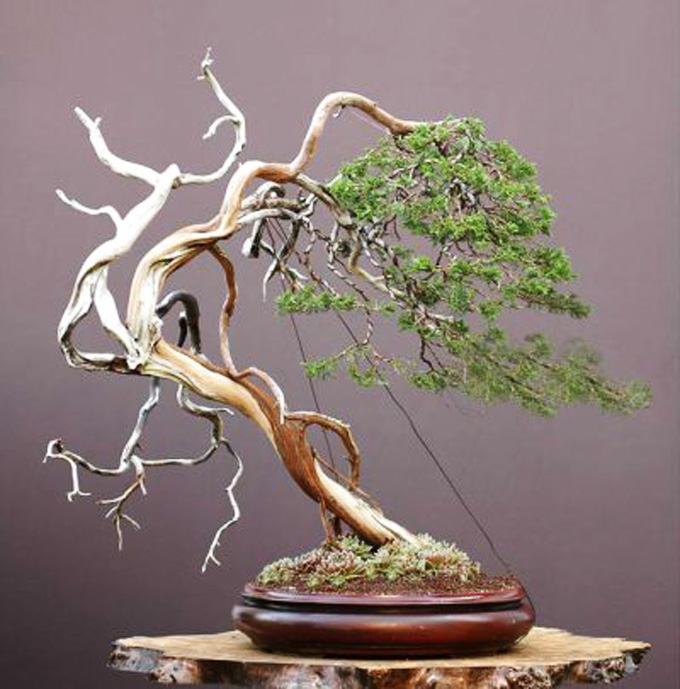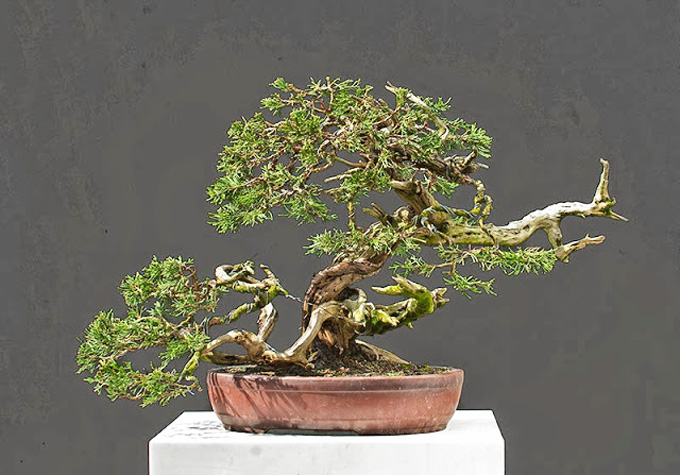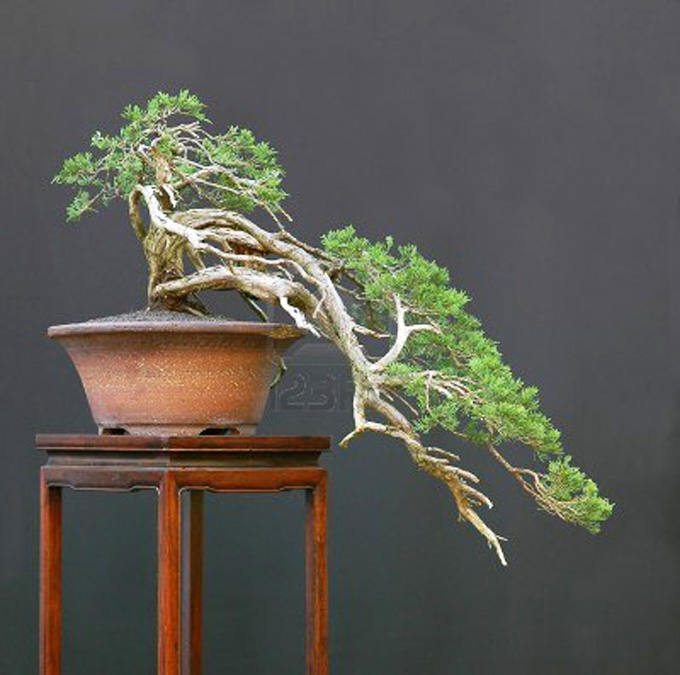 This elegant Sabina juniper (aka Savin juniper) was styled by Walter Pall. Does the deadwood that’s hanging down on the left distract from the natural flow of tree, or does it add something (a touch of untamed wildness?) to the overall effect? The photo is from The Art of Bonsai Project. The pot is by Bryan Albright.
This elegant Sabina juniper (aka Savin juniper) was styled by Walter Pall. Does the deadwood that’s hanging down on the left distract from the natural flow of tree, or does it add something (a touch of untamed wildness?) to the overall effect? The photo is from The Art of Bonsai Project. The pot is by Bryan Albright.
“No matter where you go, there you are” (Buckaroo Banzai) could be paraphrased, “no matter where you go on the web, sooner or later you’ll find Walter Pall ” (the Buckaroo of European Bonsai?). Walter is both prolific and very good at what he does. In this case, what he does is style some Sabina junipers, a bonsai species that may be common in Europe, but is little-known here in North America.
Here’s what Wikipedia has to say about Sabina junipers: “Juniperus sabina (Savin Juniper or Savin) is a species of juniper native to the mountains of central and southern Europe and western and central Asia, from Spain east to eastern Siberia, typically growing at altitudes of 1,000-3,300 m.” This might help explain the ‘little known here in North America” piece.
 This Sabina is from a very recent post on Walter’s Bonsai Adventures. The tree was collected in Austria in 1997.
This Sabina is from a very recent post on Walter’s Bonsai Adventures. The tree was collected in Austria in 1997.
 This is a stock photo of a cascading Sabina with a somewhat ‘in training’ look. The caption says, “Sabina juniper, Juniperus sabina, 50 cm high, 80 cm long, 100 years old, collected in Austria, styled by Walter Pall.”
This is a stock photo of a cascading Sabina with a somewhat ‘in training’ look. The caption says, “Sabina juniper, Juniperus sabina, 50 cm high, 80 cm long, 100 years old, collected in Austria, styled by Walter Pall.”
Every time I see such elaborate and fragile jin, I can’t help wondering how risky transport is; I would hate to hear a “crack” while moving these beauties.
The tree at the top of the page needs all of the dead wood on the left removed! Just my own thought. Cover it with your hand & see how much better it looks!
I love the wildness and the grace of Walter’s tree. The deadwood makes it unique, and not just another tree that looks like a bonsai.
Thanks Michael and Dennis for your comments about the jin in question. And agreed it is thinner and more fragile than most jin and its life expectancy might well be limited.
Hi Diane,
True dat. The heavier deadwood and the lighter deadwood in question surely add to the tree’s uniqueness.
I may be mistaken, but I think the first tree although it’s from Walter Pall, wasn’t worked by him the last time. It was one of his students that worked on it before going to Japan to start an aprenticeship with a japanese master.
Thanks Henrique,
Do you know the name of the student and the Japanese master?
I am normally not a big fan of too much deadwood, especially the fragile stuff, but every bit of this is necessary for the balance of the composition.
Actually, my objection to over-done deadwood is that it is usually too massive. Not the case here.
BTW: we notice that the uneducated public doesn’t seem to relate to the deadwood that makes us afficionados wet our britches.
The tree is beautiful and the lower left jinn does not distract the eye, however the trees style and flow is much more harmonious without it. Still a great tree either way. Fantastic job Walter!